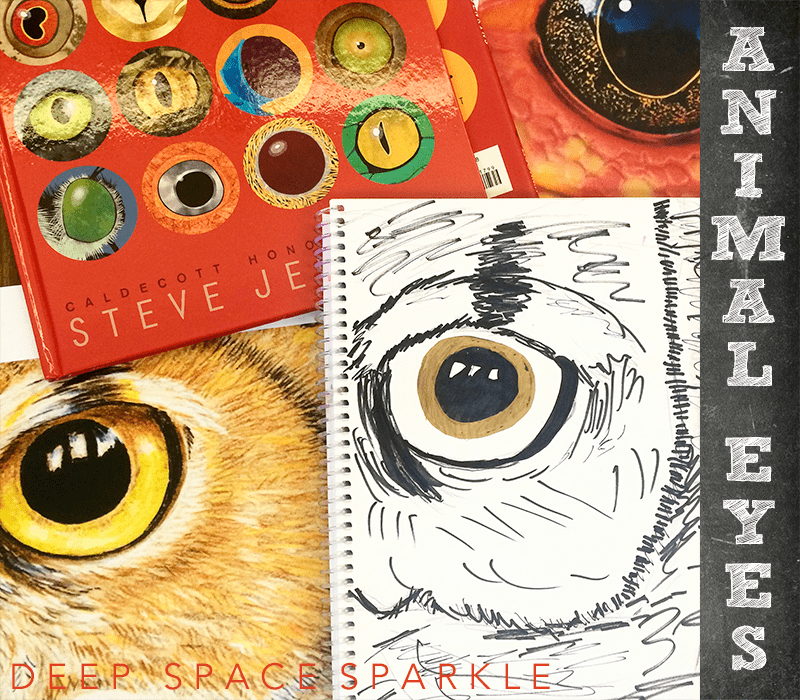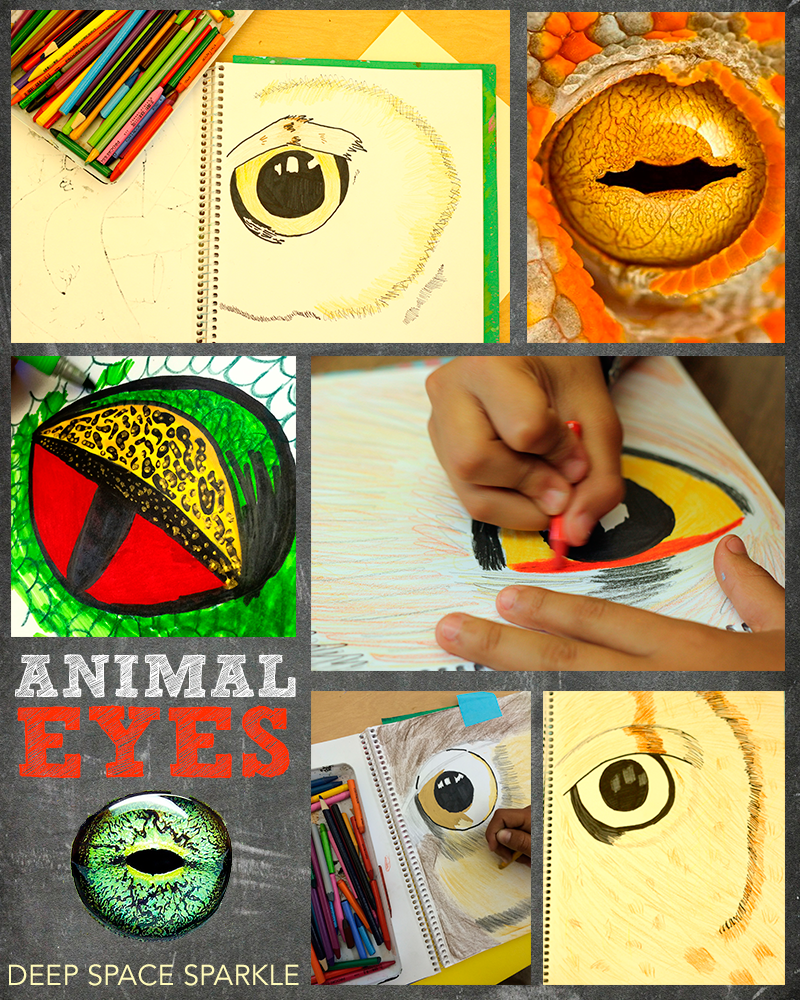SKETCHBOOK PROJECT #8: ANIMAL EYES

The Sketchbook Project is a record of how my sixth grade students used sketchbooks during their art class to record art information and create projects. Learn how I used sketchbooks instead of individual sheets of paper to teach art & creativity.
Week One: The Beginning
Week Two: Creating Value
Week Three: Atmospheric Perspective
Week Four: Tree Line Drawings
Week Five: Sonia Delaunay Abstract Art
Week Six: Portrait Journalling
Week Seven: Line drawings
Week Eight: Farm Animals
WHAT WE DID TO CREATE ANIMAL EYES:
Books have continued to be the most consistent source of art lesson inspiration for me.
Eye to Eye: How Animals See The World by Steven Jenkins (Amazon affiliate link) is an exploration of close-up images of various animal eyes.
As the last project in our Sketchbook series, I still wanted the project to use art supplies that could be picked up at anytime so that the children could finish their artwork at home or during free choice class time.
I set a variety of coloring tools on each table (markers, colored pencils and pastels) and allowed the kids to choose whichever medium they wanted.
I also photocopied pages from the book so that the kids could select an animal eye that they liked as well as downloaded and printed a few photographs of close-up animal eyes to place on the white board.
This provided enough examples of kids to start weeding through what appealed to them.
Ad the kids moved through drawing and then to coloring, many students remembered my collection of metallic paints and asked if they could use them. The combination of a marker background with metallic paint details was really effective!
OBSERVATION DRAWING
Like many of the drawing lessons in this sketchbook series, the goal was not to provide guided instructions on how to draw an eye but rather encourage the students to select an animal eye and use a scaled-up method to create a composition on their paper.
I asked the children to consider the eyeball the feature of the art project; to make it prominent and large enough so that even the smallest details can be seen.
Truthfully, this is still a challenge for many students. If you find that some of your students are struggling to draw a large eyeball, offer a few randomly sized plastic containers for the child to trace a circle with.
Yes, you can teach the kids how to draw a circle. But sometimes using a round plastic container is all the child needs to get a jump start on the project.

Missed the last installments of the Sketchbook project?
Intro: The Sketchbook Project: The Beginning
Week #1: The Sketchbook Project: Creating Value + Free Worksheet
Week # 2 The Sketchbook Project: Atmospheric Perspective (Landscapes)
Week #3 The Sketchbook Project: Tree Line Drawings
Week #4 The Sketchbook Project: Sonia Delaunay Circles
Week #5 Expressive Self-Portraits
WEEK #6 Line Drawings
WEEK #7 Farm Animals












Love this! Who knew animal eyes were so beautiful? Thanks for sharing!
I have all my elementary students use a sketch for recording new art concepts, sketching out ideas and for the joy of doodling. BUT all sketchbooks are not equal, like pages falling out with ring binders. Have you found a brand you can recommend? I need to purchase 110 before September
I like Sketch for Schools which is what Patty used.
These are great. Did you give the kids colored copies of the pages? Also, did they use grid drawings to reproduce the image?
“I also photocopied pages from the book so that the kids could select an animal eye that they liked as well as downloaded and printed a few photographs of close-up animal eyes to place on the white board.”
Hi Patty, I am loving using your sketchbook project for my own class. Is #8 the last lesson or do you have more coming?
Hi Sharon,
So glad you like the series. That’s it I’m afraid. This was a series I did during my last year of teaching. Now all my new lessons go in The Sparklers Club membership. Tons of new sketchbook worthy lessons there. 🙂
AMAZING.